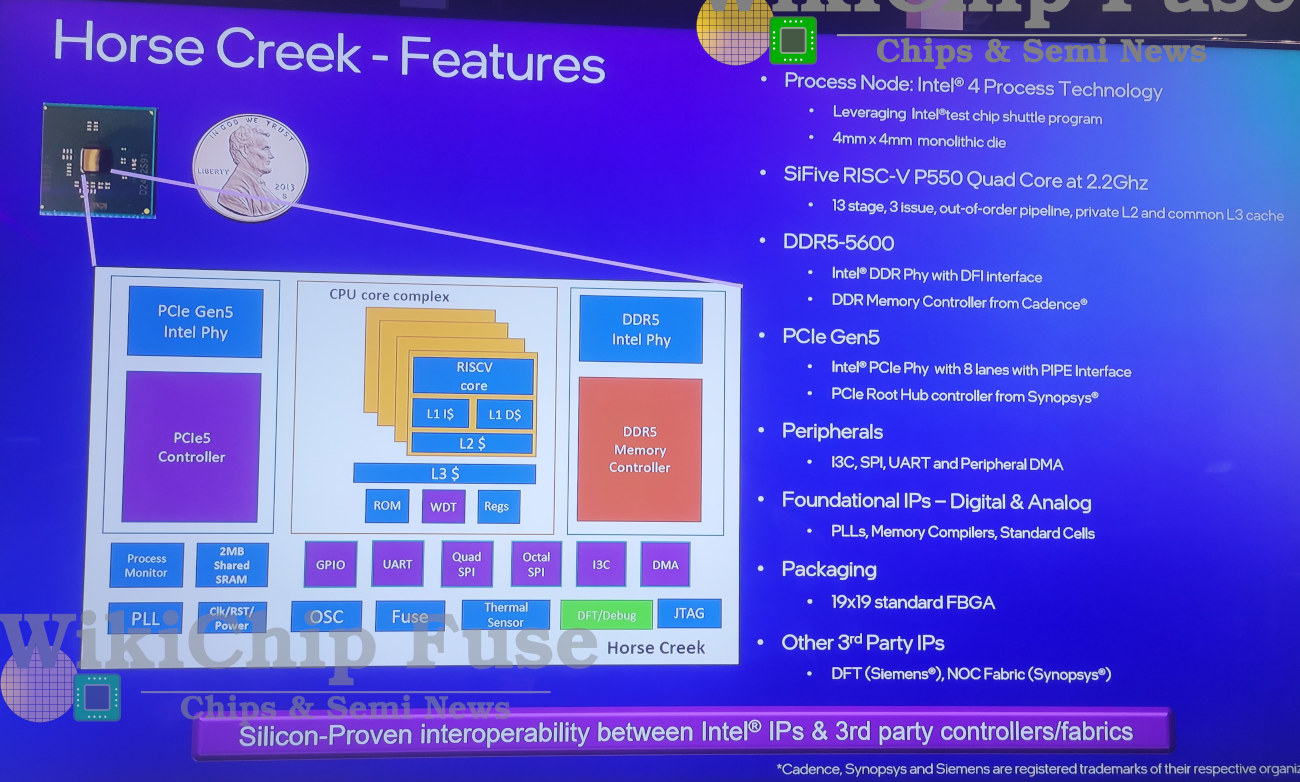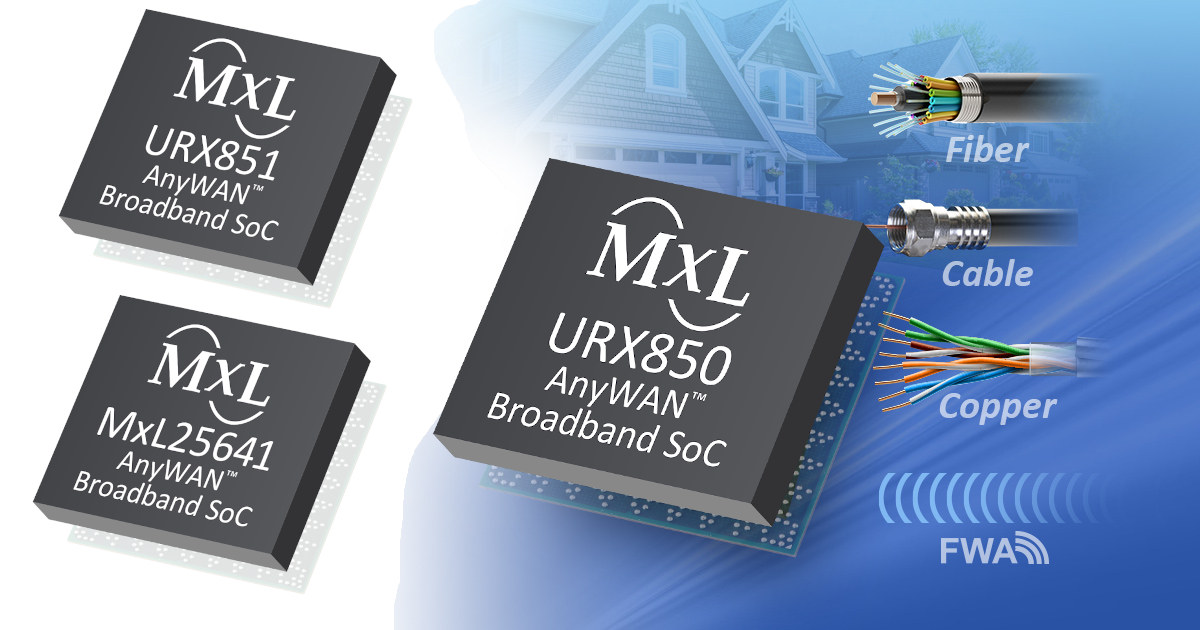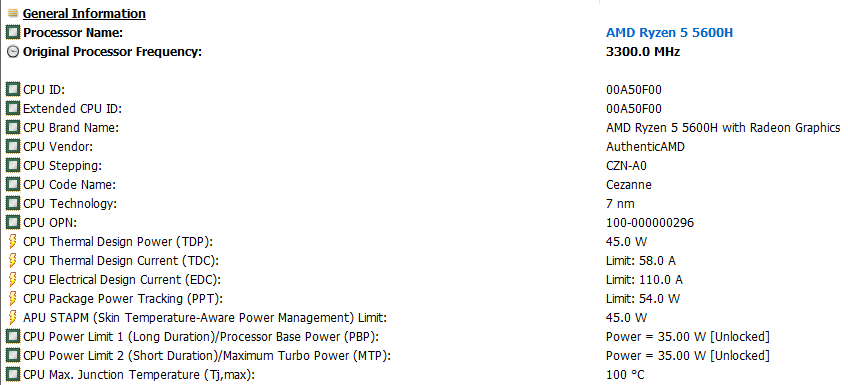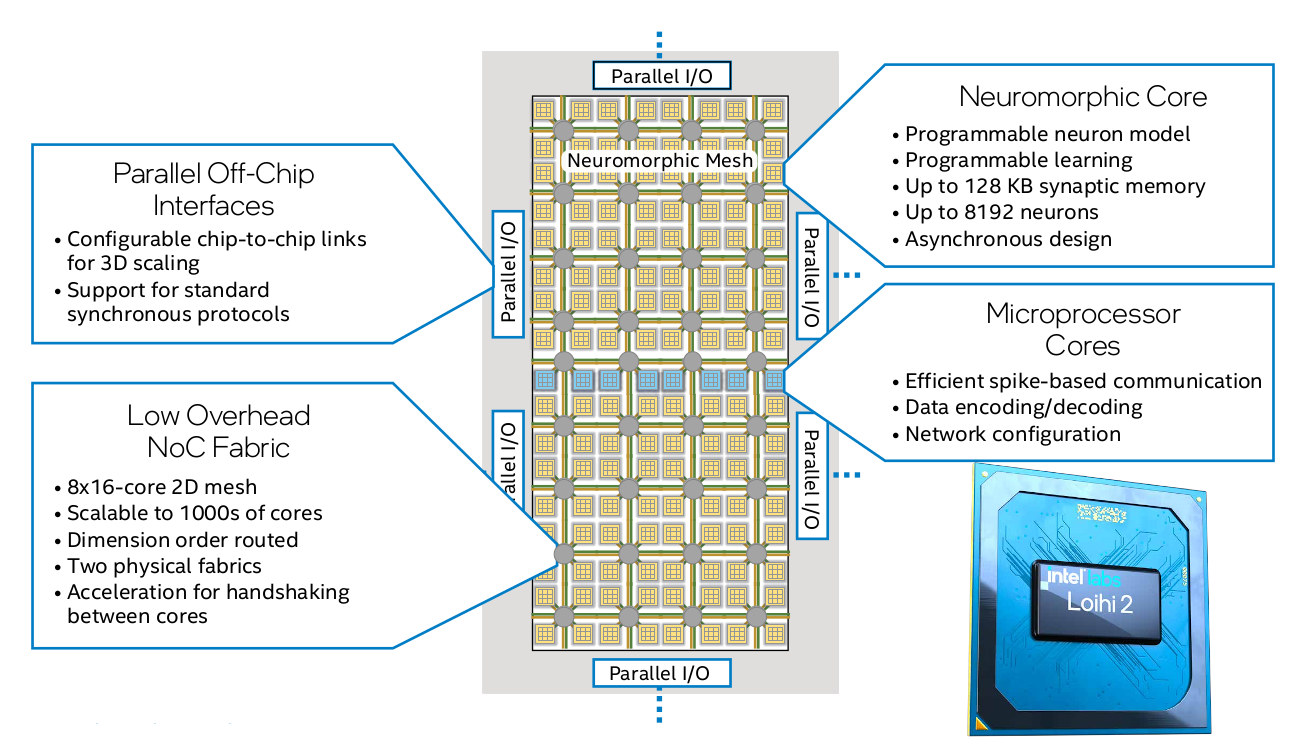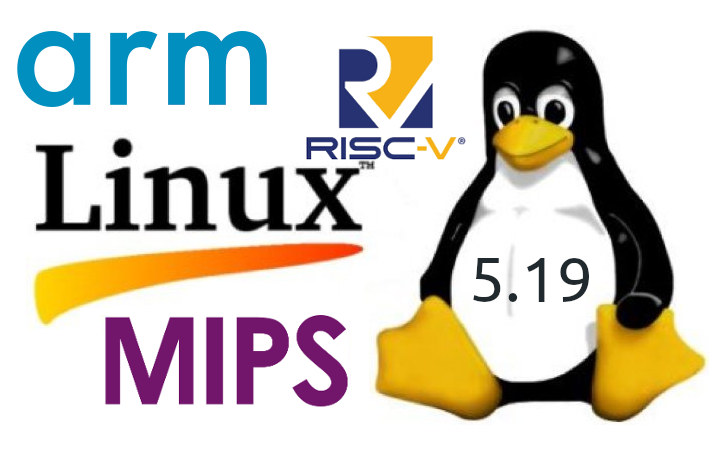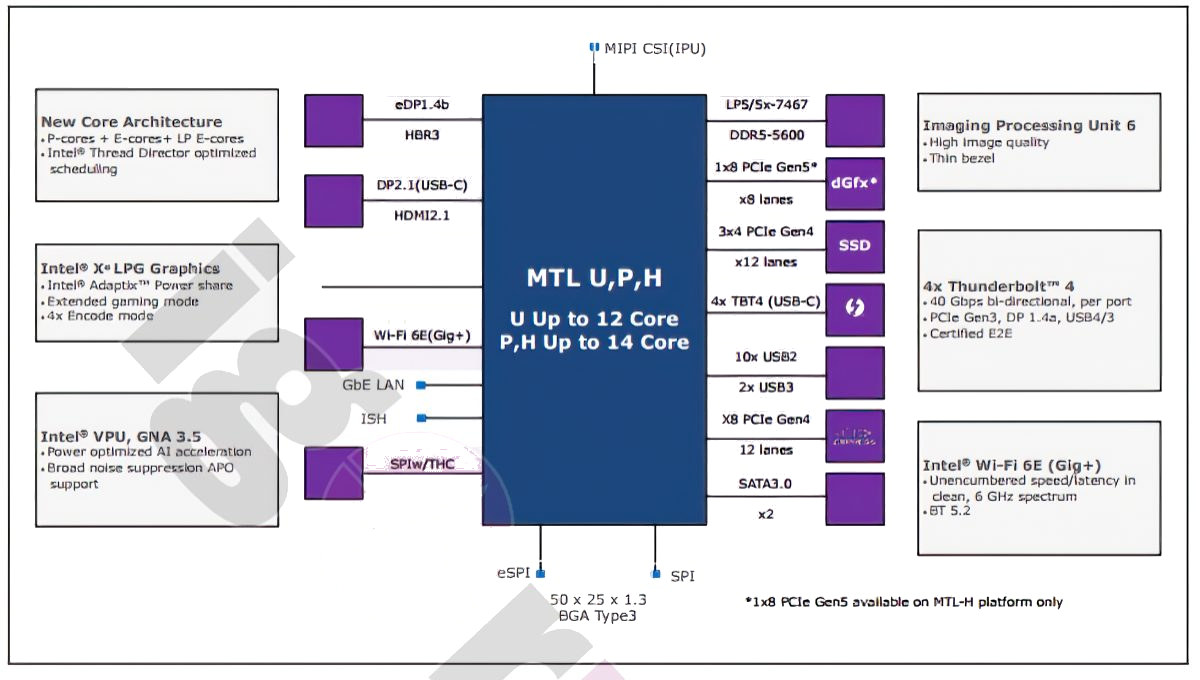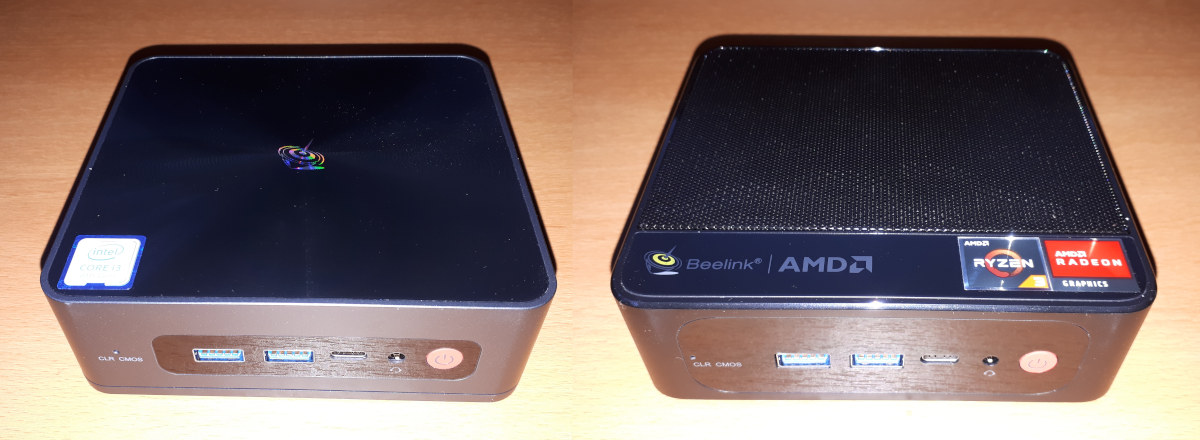When SiFive introduced its Performance P550 64-bit RISC-V processor in 2021, we were told that Intel would use it in the Horse Creek platform with “leading-edge interface IP such as DDR and PCIe” and manufactured with Intel’s 7nm process. We now have more details about the Horse Creek platform, as a development board was showcased for the first time in public at the Intel Innovation 2022 Developer Conference, and according to a report by Wikichip, the Cortex-A75 class quad-core RISC-V processor runs at up to 2.2 GHz, supports DDR5-5600 memory and eight PCIe 5.0 lanes, and was taped out with Intel 4 process. Horse Creek platform specifications: CPU – SiFive P500 quad-core RISC-V processor @ up to 2.2 GHz with a 13-stage, 3-issue, out-of-order (OoO) pipeline, private L2 cache, and common L3 cache Memory – DDR5-5600 interface PCIe – PCIe Gen5 through Intel’s PCIe PHY with 8 lanes, Synopsys PCIe […]
Intel N100 & N200 Alder Lake-N SKUs could be the first “Intel Processor” processors
Intel recently announced they would kill the Celeron and Pentium brands for entry-level PCs, and replace these with the “Intel Processor” brand for notebooks from 2023 onwards, meaning we would get “Intel Core” and “Intel Processor” processors depending on the market segment. The Intel N100 & N200, or more exactly the Intel Processor N100 and Processor N200, Alder Lake-N SKUs may be the first chips with the new branding. They were discovered by Coelacanth-Dream while looking at some Linux boot logs. Intel Processor N100:
|
1 2 3 4 |
<6>[ 0.000000] DMI: Intel Corporation Alder Lake Client Platform/AlderLake-N LP5 RVP, BIOS ADLNFWI1.R00.3301.A00.2207190854 07/19/2022 <6>[ 0.000000] tsc: Detected 800.000 MHz processor <6>[ 0.324882] smpboot: CPU0: Intel(R) N100 (family: 0x6, model: 0xbe, stepping: 0x0) <6>[ 0.335923] smp: Brought up 1 node, 4 CPUs |
Intel Processor N200:
|
1 2 3 4 |
<6>[ 0.000000] DMI: Intel Corporation Alder Lake Client Platform/AlderLake-N LP5 RVP, BIOS ADLNFWI1.R00.3301.A00.2207190854 07/19/2022 <6>[ 0.000000] tsc: Detected 1000.000 MHz processor <6>[ 0.319625] smpboot: CPU0: Intel(R) N200 (family: 0x6, model: 0xbe, stepping: 0x0) <6>[ 0.430132] smp: Brought up 1 node, 4 CPUs |
Both processors appear pretty similar but the boot logs show the N100 with an 800 MHz base frequency, and the N200 with a 1,000 MHz base frequency. Coelacanth-Dream further analyzed the data and found extra information about the Alder Lake-N processors as shown in the table below. The new SKUs will not feature “big” Performance cores at all, and only […]
MaxLinear AnyWAN URX850, URX851, and MxL25641 Intel Atom SoCs target broadband routers and gateways
MaxLinear has just announced the availability of the first three AnyWAN broadband SoCs featuring Intel Atom cores with the MxL25641, URX850, and URX851 processors designed for 5Gbps and 10 Gbps broadband routers and gateways, usually referred to as CPEs (customer premise equipment). When I first read the news of MaxLinear releasing Intel Atom SoCs, I could not quite compute how it was possible, as I can’t remember any third-party releasing Intel processors and I thought it might be a system-in-package instead. But MaxLinear keeps calling those Intel Atom SoCs, and the reason is that the company acquired Intel’s Home Gateway Platform Division in 2020. MaxLinear AnyWAN x86 SoCs key features and specifications: AnyWAN URX850/URX851 (for 10Gbps systems) CPU – 4x Intel Atom CPU cores @ 2 GHz Memory – Up to 16GB LPDDR4 or DDR4 Storage – eMMC 5.1 flash Networking 4x 2.5GE PHYs XFI WAN Packet processor for full […]
How to check TDP (PL1 and PL2 power limits) in Windows and Linux
A TDP (Thermal Design Power) value in Watts will usually be provided for Intel and AMD processors to help manufacturers design an appropriate thermal solution for a given processor, and it’s often used to estimate power consumption by consumers. But TDP is also often configurable, and manufacturers may decide to increase to decrease the value for higher performance or lower power consumption, so we’ll show you how to check the TDP value, or more exactly PL1 and PL2 power limits in both Windows 11 and Linux (Ubuntu 22.04). Note that TDP is being replaced by PBP (Processor Base Power) in newer processors, with PL1 (Long Duration) corresponding to BPB, and PL2 (Short Duration) to Maximum Turbo Power (MTP), at least on Intel chips. Check the TDP values in Windows 11 You’ll first need to install HWiNFO64 program, then start it leaving all options unticked (default), and go to Control Processor(s) […]
Intel Loihi 2 high-efficiency neuromorphic chip works with the Lava open-source framework
Neuromorphic AI accelerator chips relying on spiking neural networks (SNN), which we’ve seen from companies such as Innatera or Brainchip, will be used more and more in the future as they provide much higher efficiency compared to traditional deep neural networks (DNN) solutions. Intel is also working on SNN, and recently announced the Loihi 2 second-generation neuromorphic research chip with up to 1 million neurons (the human brain has 86 billion of those on average) that delivers up to 175x lower energy to learn a new object instance with similar or better speed and accuracy compared to conventional methods running on a central processing unit (CPU). The new Loihi 2 neuromorphic chip offers the following improvement over the first generation Loihi: Up to 10x faster processing capability (2x for simple neuron state, 5x for synaptic operations, 10x for spike generation) Up to 60x more inter-chip bandwidth achieved through a combination […]
Linux 5.19 Release – Main changes, Arm, RISC-V and MIPS architectures
Linus Torvalds has just announced the release of Linux 5.19. It should be the last 5.xx version, with Linux 6.0 coming for the next cycle: So here we are, one week late, and 5.19 is tagged and pushed out. The full shortlog (just from rc8, obviously not all of 5.19) is below, but I can happily report that there is nothing really interesting in there. A lot of random small stuff. In the diffstat, the loongarch updates stand out, as does another batch of the networking sysctl READ_ONCE() annotations to make some of the data race checker code happy. Other than that it’s really just a mixed bag of various odds and ends. On a personal note, the most interesting part here is that I did the release (and am writing this) on an arm64 laptop. It’s something I’ve been waiting for for a _loong_ time, and it’s finally reality, […]
Intel Meteor Lake mobile processor highlights leaked
Intel Meteor Lake processor family is supposed to succeed the 13th generation Raptor Lake chips itself coming after the current 12th generation Alder lake processors. It is scheduled to launch next year (2023), but we already have some details about the Meteor Lake U, P, and H mobile processors from a leak. Just like most Alder Lake processors, Meteor Lake will be hybrid processors with power and energy-efficient cores, but they’ll also feature new LP E-cores which should stand for “low power efficiency” cores in order to further lower the power consumption while a laptop or mini PC in standby mode. Meteor Lake mobile processors highlights: CPU P cores + E cores + LP-E cores architecture U-series with up to 12 cores P- and H-series up to 14 cores; Up to 6+8 configuration with up to 24MB LLC/core (Note the LP-E cores don’t seem to be part of the main […]
Beelink SEi8/SER3 review – Intel Core i3-8109U and AMD Ryzen 3 3200U mini PCs face off in Windows 11 (part 1)
In the past, new mini PCs were released as a result of new processors coming to market. However, with the pandemic and its consequences on the supply chain, some Chinese manufacturers’ survival response has been to source old processors in order to continue presenting new devices. It could be argued that for this approach to be successful these alternative older processors should at least be comparable in performance terms to the latest processors that are currently, or theoretically potentially, now available. In terms of low-end Intel mini PC processor chronology which started with Bay Trail and then Cherry Trail followed by the Lakes of Apollo and Gemini, the current benchmark is Jasper Lake. A good example of this adaptation to market circumstances is Beelink’s release of their latest additions to their SEi and SER product lines which feature the older Intel Core i3-8109U (Coffee Lake) and AMD 3200U processors respectively. […]


